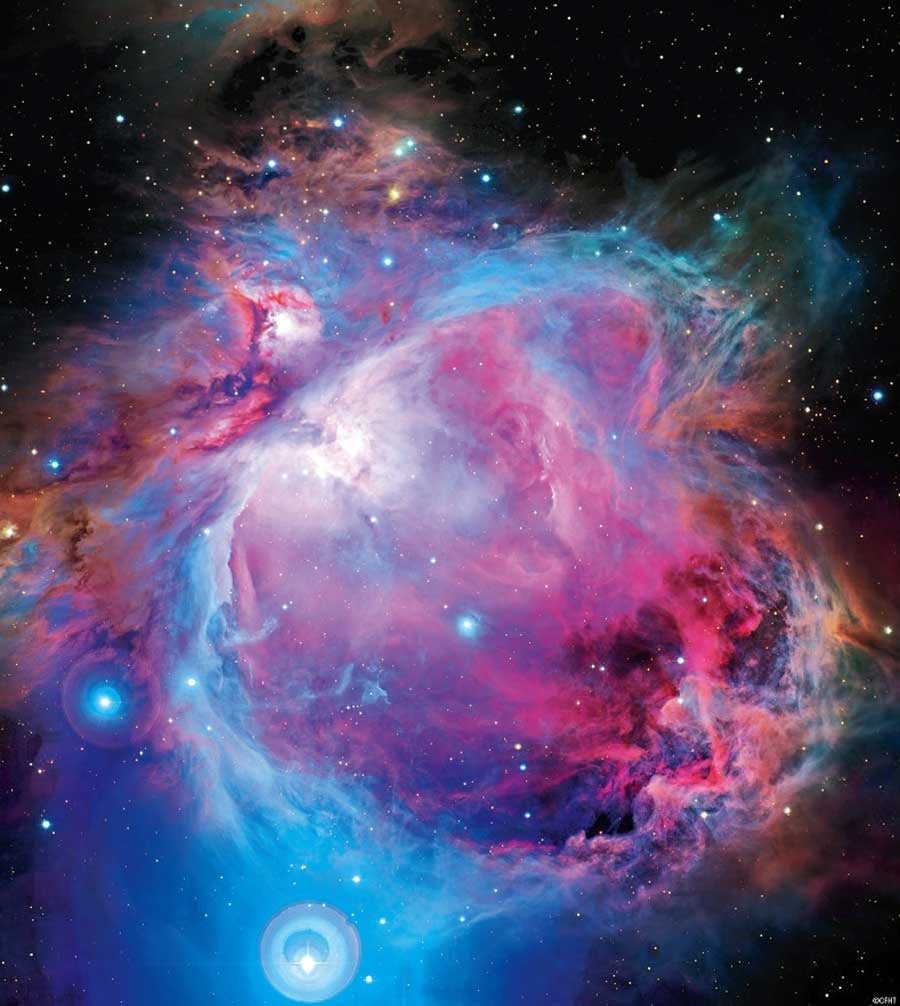Targets for February 7–14, 2013
Naked eye: The constellation Canis Minor
Small telescope: Reflection nebula M78
Large telescope: The Witch Head Nebula (IC 2118)
This week’s naked-eye object is the tiny constellation Canis Minor the Small Dog. And, indeed, it is small — this constellation’s size ranks 71st out of the 88 star patterns that cover the sky. Canis Minor occupies only 183 square degrees, or just 0.4 percent of the sky.
Its big brother, Canis Major, is a well-formed constellation that contains seven of the 200 brightest stars. The Small Dog, on the other hand, contains only two.
Luckily, one of those is Procyon (Alpha [α] Canis Minoris), the sky’s eighth-brightest star. It shines at magnitude 0.34, and lies 11.4 light-years away. The name Procyon is Greek and means “before the Dog.” This refers to the fact that, in mid-northern latitudes, the star rises slightly before brilliant Sirius, known for millennia as the Dog Star. Procyon, therefore, is Sirius’ herald.
The other notable star in this constellation in Gomeisa (Beta [β] Canis Minoris). This luminary glows at magnitude 2.9, making it the sky’s 149th-brightest star.
When you go out at night, these two stars comprise the constellation. Procyon marks the dog’s head and Gomeisa its tail. And that’s all there is of the Small Dog.
The best date to spot Canis Minor is January 14. Around that date, it sits opposite the Sun as seen from Earth. Conversely, you’ll have no luck spotting the Small Dog around July 16, which is when the Sun is in its area.
Mirror, mirror …
This week’s small telescope target is the sky’s brightest reflection nebula: M78 in Orion. Through a small telescope at about 120x, you’ll spot an 11th-magnitude star. On either side of this star lie the two densest parts of M78.
If your site is dark, you’ll see another, much fainter region of nebulosity, NGC 2067, only 4.5′ northwest of M78. A dark lane separates the two. Because so few background stars populate the field of view, astronomers believe M78 sits within a huge, dark cloud that eventually will form stars.
Oh, and don’t use any nebular or deep-sky filter when you view M78. Because its light is mainly reflected starlight (composed of all frequencies) a filter will only dim the view.
Halloween, anyone?
This week’s deep-sky object is the Witch Head Nebula, also known as IC 2118, in the constellation Eridanus the River. I guess I’m running a theme this week because the Witch Head is another reflection nebula. This one, however, is on a whole new scale: While M78 spans only 8′, IC 2118 stretches 1.5°.
Like M78 and other similar objects, the Witch Head Nebula glows by reflecting starlight. Well, astronomers have identified the star lighting up this cloud. It’s Rigel, the upraised left foot of Orion the Hunter.
You’ll need to be under a dark sky to spot the Witch Head. Start your search a bit west of a point two-thirds of the way from brilliant Rigel (Beta Orionis) to magnitude 2.8 Beta Eridani. Through an 8-inch telescope, use an eyepiece that gives low power and a wide field of view. Through such an instrument you should see the brightest parts of the Witch’s face.
If you’re lucky enough to have a 16-inch or larger telescope, IC 2118 will be quite apparent, but you’ll have to move the telescope to scan the Witch’s features. The starting point between Rigel and Beta Eridani marks the nebula’s northern part.
Expand your observing at Astronomy.com
StarDome
Check out Astronomy.com’s interactive StarDome to see an accurate map of your sky. This tool will help you locate this week’s targets.
The Sky this Week
Get a daily digest of celestial events coming soon to a sky near you.
Observing Talk
After you listen to the podcast and try to find the objects, be sure to share your observing experience with us by leaving a comment at the blog or in the Reader Forums.











